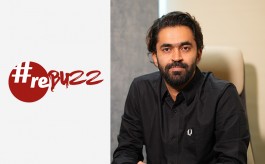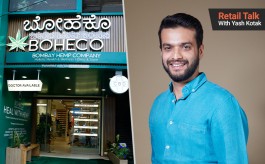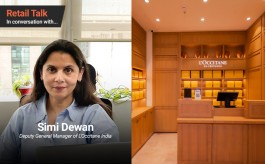The Challenge of Cost Control of Build & Fit-out in India
By Press Trust of India | January 13, 2013
"There is one rule for the industrialist and that is: Make the best quality of goods possible at the lowest cost possible, paying the highest wages possible" - Henry Ford. I learnt this, walked through exactly the same journey and executed the projects with 3 constraints i.e. Cost, Time & Scope; which resulted in best yield of Quality works throughout my career.
 In today's time of rapid technological change, tough
global and domestic competition, this is expected behaviour from a good Project
Manager. The total cost management is central to sustained corporate
profitability and competitiveness. The management mantra today is conquering
your costs, before they conquer you. The cost means total cost for the
organization & not adding up any hidden cost post the approvals. The cost
leadership strategy is never a compromise on either quality or technology or
product differentiation. When there is a management diktat for a low costs that
doesn't necessarily mean the cheapest; as there may not be any advantage if
they are not happy after buying the product of the cheapest cost. In other
words it clearly means a selection of the lowest from the set of best vendors
to achieve the desired results. Cost management shall be always driven with
organization as the main focus is to arrive at the targeted ROCE.
In today's time of rapid technological change, tough
global and domestic competition, this is expected behaviour from a good Project
Manager. The total cost management is central to sustained corporate
profitability and competitiveness. The management mantra today is conquering
your costs, before they conquer you. The cost means total cost for the
organization & not adding up any hidden cost post the approvals. The cost
leadership strategy is never a compromise on either quality or technology or
product differentiation. When there is a management diktat for a low costs that
doesn't necessarily mean the cheapest; as there may not be any advantage if
they are not happy after buying the product of the cheapest cost. In other
words it clearly means a selection of the lowest from the set of best vendors
to achieve the desired results. Cost management shall be always driven with
organization as the main focus is to arrive at the targeted ROCE.
In India for cost controlling the first challenge is that though the material & labour cost doesn't fluctuate more than 10% every year, but taxation does vary which is really unpredictable. It's becoming increasingly difficult especially when we budget any cost estimations; as the various taxation structures of VAT, Excise, Service Tax and Entry Tax keeps hovering around us. Second challenge is we are depending on the developers to complete the entire mall infrastructure also along with statutory approvals in place; hence though we are ready with all fit-outs done but can't launch the store for months due to want of these requirements. This delayed period it results in a dead capex investment (without interest) and we keep on spending on the maintenance of the stores else store depreciates. Third challenge is a continuous rise in fuel prices within year only keeps on pushing transportation cost which is largely affecting all of us; hence when we compare like to like projects we may easily see a large difference in final closures. Fourth challenge comes from fluctuating Forex rates which drives all our imports. And fifth probability might be if the initial estimations/quantifications are not correct then it may create a ruckus at the final billing which is neither appreciated by vendors nor management.
Whether you are working on a new project or an existing one, cost management starts with a thorough understanding of the project objectives. Taking account of risk, programme, quality, design and budgets forms the basis of feasibility and procurement strategies. One shall work closely with other colleagues in organization to get an overall view of the project. Cost management is necessary to ensure that the planned development of a design and procurement of a project is such that; the price for its construction provides value for money and is within the limits.
Fit-out work is a major capital expenditure, which organizations do not commence until they are certain that there is proper feasibility done & seen clear ROCE. Pre-contract estimating sets the original budget forecasting which would be the likely expenditure to management. This budget should be used positively to ensure that the design stays within the scope of the original scheme. Most corporates are working within tight pre-defined budgets; however if on account of selection of the lowest cost; the quality of works may suffer resulting into the scheme failure.
The preparation of the first estimate would be based on a variety of techniques, for example, historic data or approximate quantities. Many projects often have substantial elements that are unique and for which there is no relevant historic data. In these cases it is necessary to analyse the project in detailed line by line work sections. During this stage it is wise to contact potential contractors and manufacturers especially with regard to order-of-cost estimates for specialist sections. Unfortunately due to uncertainties mentioned above the estimates of the cost and time are prepared and revised at many stages throughout the project cycle. As these are all predictions and should not be considered 100% accurate. Consequently, as the design develops till last milestone may be during on-site execution, the accuracy of the estimate should improve.
Other matters that have an effect on cost and need to be addressed include location of project and access thereto, non-standard works, structural works; availability of labour and the possible need of accommodation for workmen, off-site construction and temporary works. It may also be necessary to consider allowances for more design development, consultants, company costs and general contingencies.
We create monthly MIS update of cost plan which is the vehicle whereby the team is made aware of the current cost of the project. This also helps majorly in tracking cash flow for the organization. We also do have all the documentation formatted in the same way it can be compared and reconciled. This is a table that summarizes and reconciles between each milestone. A milestone report is normally a report such as…
· Original budget
·
Line by Line item
costs
·
Contractual sum
· Financial statement
·
Final account
closure.
The main-group costs are tabled together with the total cost, area, cost per square foot and a comment on any major changes to brief. The costs can be plotted on a graph especially after several projects; we can create all comparative charts.
We should always take care of the first budget figure reported to management. When the original feasibility study is performed the budget is often fixed; it is therefore essential that all cost reporting is reconciled back to the original budget. In most cases, better cost planning will produce tenders within budget. If, due to market conditions or late changes in designs and specification, adjustments need to be made to a tender, information on potential savings will need to be identified. If there are significant changes from the initial tender documents, consideration should be given to the need for seeking revised tenders.
Finally I would like to share that we…the Project Department are always seen as a cost centre for the organization hence I realized that it was too important for me to not only save out of capex given to me but also give back something to organization in terms of new initiatives with new savings. For any company to be healthy in bottom line; it is important to manage well its product/service cost, quality and performance. At any corporates the management will always demand high quality and better performance products/services and at the same time, they want the costs to be curtailed. To fulfil these expectations we as a team exercise the entire cost management which is a blend of technical expertise, collaborative working, contingency planning, EPCG benefits, aggressive discussions with developers and commercial understanding that adds value beyond the balance sheet. My team does continuous value engineering either on or off site & apply best negotiation skills prior to actual execution of any works. Apart from initiating these initiatives & by implementation of Green technologies we had worked very hard to give something back to the organization as well as to the mother Earth through Eco-Friendly initiatives which has resulted in huge savings in opex & capex. Though the prime objective was to improve on bottom line but the same initiatives gave us a pride to contribute to a great CSR as well.
Sudhir Soundalgekar is working for Shoppers Stop Ltd. as Vice President - Lifestyle, Specialty & Energy Projects. He is an Architect from Academy of Architecture, Mumbai & an MBA graduate. A leader with 25 years of rich experience across multifarious industry spectrums in directing Interior fit-outs of Commercial offices, Departmental Stores set-ups; Architectural Projects of Residential, Manufacturing-Pharmaceutical Factories.






Comments